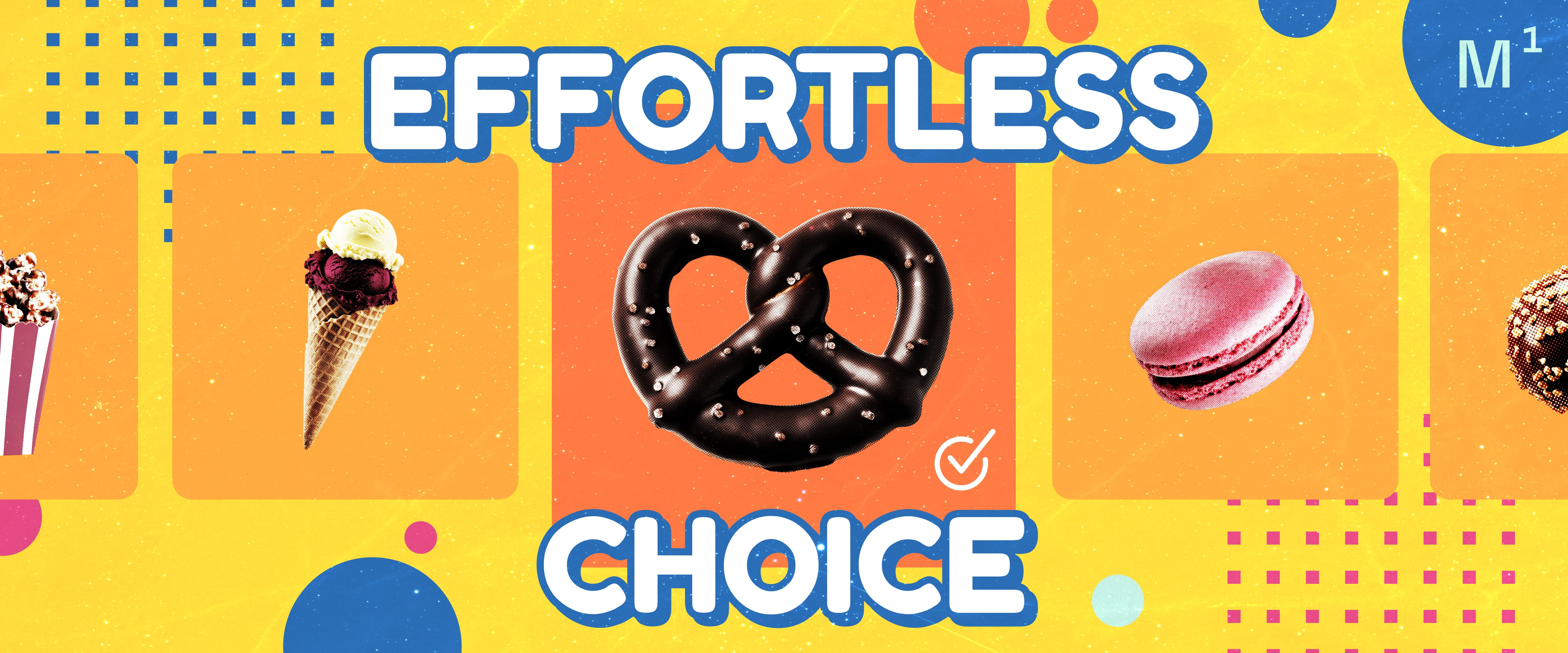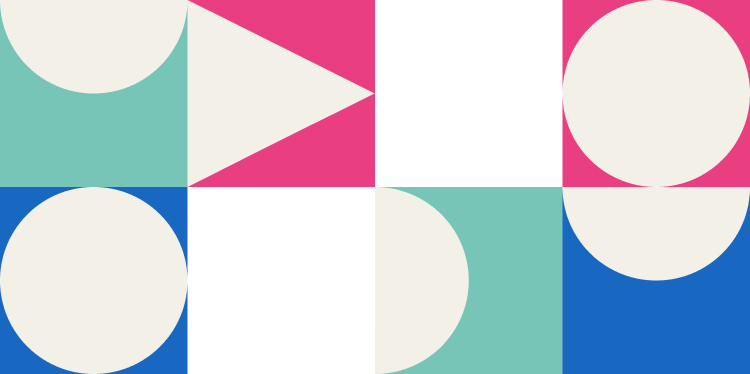
Small Joys, Big Business: The Behavioral Science of Everyday Indulgence
When someone unwraps a chocolate bar bought at the gas station, their brain is chasing the same emotional rewards as a bourbon connoisseur nosing a pour: anticipation and enjoyment, satisfaction and restoration.
Yet countless everyday indulgences still get marketed as mere drinks and snacks.
In our work for premium spirits, Method1 has transformed hesitation at shelf into anticipation at checkout by applying behavioral science, understanding the cognitive biases and emotional triggers that drive most purchase decisions.
Doesn't any brand that creates a moment of joy deserve the same science-based approach?
There are rich insights in the work we've done building spirits brands like Elijah Craig and Rittenhouse Rye. The same principles that make choosing them feel effortless can redefine how and why people choose indulgences across categories.
I'm looking at you, CPG. There's a clear competitive advantage in borrowing proven strategies from science-driven spirits marketing, making your everyday indulgence brand irresistibly easy to choose.
What Premium Spirits Know That CPG Doesn’t
Indulgence brands like spirits have an additional, significant barrier to purchase to worry about, on top of all the usual suspects (price, etc.).
Behavioral science tells us that every indulgence purchase requires permission. Not permission from others, permission from yourself. It makes sense. Indulgence is fun, but it’s pleasure associated with feeling guilty. We can easily decide against it if we think about it too much.
At Method1, we call this “the permission problem.”
To overcome the permission problem, we've designed campaigns that bypass conscious consideration entirely by applying behavioral principles that activate System 1 thinking. Automatic and emotion-driven, this is the cognitively effortless decision making that allows us to stick with a comfortable habit or simply follow the crowd.
And this is where CPG marketing can go wrong.
Instead of bypassing the permission problem, everyday indulgence brands often try to tackle it head-on. Packaging makes defensive promises like, "Reduced fat” or "Now with less sugar!”
But this kind of messaging only activates System 2, which our brains prefer to avoid because it's just too much work.
System 2 thinking is deliberate, analytical and effortful. It forces the consumer to consider and justify their decision. Because the moment you tell someone they don't need to feel guilty about something, you've reminded them that maybe they should.
Premium spirits, by contrast, never ask for permission. They assume it.
A bottle of Elijah Craig doesn't whisper, "You deserve this" on its label. The entire experience radiates worthiness. The heritage story, the craftsmanship narrative, the amber glow through the glass. Every element builds to the conclusion that of course this deserves space in your life.
Get your consumer thinking with their automatic System 1 brain instead of their rational System 2 processor, and their purchase decision feels effortless.
The key is to stop thinking like a "a snack in the snack aisle" and start designing for the cognitive experience of choosing joy. After all, that's the business every indulgence brand is really in.
What CPG Has that Premium Spirits Don't
Here’s where everyday indulgences hold the ace card: frequency.
Every permission structure gets stronger with repetition. Imagine applying the behavioral design that grew Elijah Craig's sales to a product chosen weekly—or even daily.
Let's do the math. If a premium bourbon gets chosen 3 times a year, that's 3 opportunities to strengthen the permission pathway. The everyday indulgence that gets chosen twice weekly? That's over 100 reinforcement cycles.
The benefits only grow post-conversion, as each easy purchase decision makes the next one even more automatic. It's compound interest for cognitive ease that creates a new marketing equation:
behavioral science x frequency = exponentially stronger purchase habits
A spirits brand might need years to build lasting preference. CPG’s everyday indulgences can create irresistible choice patterns in weeks, each trip down the grocery aisle reinforcing behavioral triggers.
It’s all about building permission structures and applying them consistently.
4 Permission Structures for Making Choice Effortless
Drawn directly from our work with premium spirits, here are 4 permission structures that can make the purchase decision cognitively effortless—even irresistible—for your consumer:
1. Time Permission: "This pause can be productive."
Spirits often position themselves as transitions (work to weekend) or moments to stop and savor. CPG can own micro-moments that make choosing feel synchronized with your day. That afternoon dip in energy? Just the brain signaling it needs a strategic reset.
This type of positioning makes selecting your snack bar feel like emotional intelligence in action, not lack of willpower. It taps into what behavioral science calls the "present bias": People naturally overvalue immediate rewards.
2. Identity Permission: "This choice reflects my values."
Bourbon drinkers signal sophistication through their selection. Your dark chocolate can signal discernment, someone who chooses quality over quantity and knows that joy doesn't require justification.
This makes your brand a badge worth wearing by leveraging "social identity theory": We choose products that reinforce who we are or who we aspire to be.
3. Reward Permission: "I've earned this option."
Spirits position themselves as trophies for accomplishment. Your premium ice cream can tap the same psychology by turning purchase into a form of recognition for navigating another day of back-to-back Zooms or for simply choosing the stairs.
Selecting your product then feels like giving yourself something you deserve. This is "moral licensing" in action: When we feel we've been good, we grant ourselves permission for small pleasures.
4. Social Permission: "This choice connects me with others."
Premium spirits often facilitate social moments. The whiskey that starts conversations, the wine that’s shared among friends. Everyday indulgences can own smaller but more frequent connections. Your chocolate-covered pretzels become the afternoon offer to a colleague.
This represents the principle of "social proof" (if others choose something, it must be worth choosing) in reverse. Instead of following what others do, your purchase creates permission for others to choose connection as much as consumption.
Small Indulgences Deserve Big, Proven Strategies
We've covered how permission structures overcome the permission problem. We've shown how frequency multiplies their power. But frequency doesn't merely multiply permission. The reinforcement transforms choice from decision to default.
Everyday indulgences that tap into permission structures become part of people’s daily rhythm. Because they’re chosen far more often than premium spirits, each decision carries the chance to feel meaningful and deserved. And when that happens, you don’t just build preference, you build lasting patterns of behavior.
This is the overlooked potential for countless CPG brands that deserve to be experienced.
The chocolate bar, the kombucha, the gourmet popcorn, they all deserve the same behavioral science as the premium bourbon. Because they can achieve even more in less time by applying its long-proven principles.
That's how small joys become big business.
To see behavioral science transform everyday indulgences into irresistible choices, explore Method1’s work.
About the Author
Paul Nelson, Managing Director at Method1, brings three decades of marketing and brand-building experience to building irresistible brands. A true champion of behavioral science and bringing moments of joy to people’s lives, he has played a role in driving success for notable brands like Elijah Craig and Evan Williams bourbons, Ocean Spray, Hershey’s, Lunazul Tequila, Cape Tide Hard Tea, Jack Daniel’s and Sam Adams.
Ready to
make your brand
irresistible?
